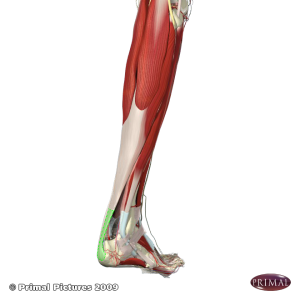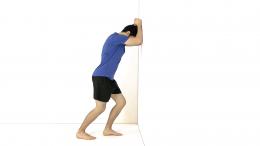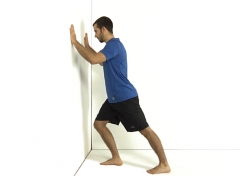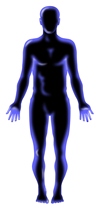Achilles Tendinopathy
What is it?
Achilles tendinopathy refers to degeneration within the large tendon which joins the two largest calf muscles (gastrocnemius and soleus) to the heel bone (calcaneus.)
How does it happen?
 This is a common injury in sports involving running and jumping, and results from overuse and overloading of the tendon.The function of the Achilles tendon is to transmit forces produced by the calf muscles to the heel bone. Repetitive use of the calf muscles and, therefore the Achilles tendon, can lead to microscopic tears within the substance of the tendon. To repair these microscopic tears, the body commences an inflammatory response. Although this response is initially part of the healing process, when the stresses are repeated, the inflammation is prolonged and so produces local tissue damage.
This is a common injury in sports involving running and jumping, and results from overuse and overloading of the tendon.The function of the Achilles tendon is to transmit forces produced by the calf muscles to the heel bone. Repetitive use of the calf muscles and, therefore the Achilles tendon, can lead to microscopic tears within the substance of the tendon. To repair these microscopic tears, the body commences an inflammatory response. Although this response is initially part of the healing process, when the stresses are repeated, the inflammation is prolonged and so produces local tissue damage.
Factors that may contribute to Achilles tendinopathy include a recent change in training (e.g. frequency, duration, intensity, training surfaces), reduced rest periods between training, biomechanical abnormalities, poor footwear, and decreased muscle flexibility and joint range of motion. These factors can lead to increased stress on the Achilles tendon, microtears and subsequent tendionopathy.
How does it feel?
Achilles tendinopathy results in pain within the tendon just above where it attaches to the heel bone. This pain typically develops gradually. Initially, the tendon may only be painful following exercise. For example, it may be first felt on rising the day following participation. Associated with the pain may be stiffness or tightness in the Achilles region. Typically, these initial signs of Achilles tendinopathy disappear quickly with walking about or after a warm bath. However, as you continue to participate, the tendinopathy progresses and the pain within the tendon becomes more intense and more frequent. For example, it may begin to be present during participation. In the early stages, this pain during participation may ease off as you warm up, only to return when you cool down. However, as you continue to participate, the tendinopathy worsens and your pain may begin to be present for longer periods during participation until it is present all of the time. This may interfere with your performance.
What should you do?
Achilles tendinopathy generally doesn’t settle without assessment and medical care. If you have or suspect you have Achilles tendinopathy, you should consult a sports medicine professional (e.g. Sports Physiotherapist or Sports Doctor). In the meantime, you can begin initial treatment. This should consist of icing and regular calf stretching. Icing can be applied in the form of crushed ice in a moist towel for 15-20 minutes or ice in a paper/polystyrene cup massaged up and down the Achilles region until the skin is numb. **NB please take care as ice can burn**
The calf can be stretched as shown below and held for around 30 seconds, repeated three times and can be done 2-3 times per day. Stretching should NOT be sore!!
What shouldn’t you do?
If you suspect you have Achilles tendinopathy, you shouldn’t ignore the problem. Your pain may get better as you exercise; however, the exercise you are doing may be interfering with the healing process and causing further damage. This can lead to your injury getting worse such that your pain does not ‘warm-up’ and you feel it throughout participation. If this occurs, your recovery may be prolonged and it may take a number of months for you to return to full participation.
Management
The assistance of a sports injury professional is important in the treatment of Achilles tendinopathy. Initially, they can assist in the diagnosis of the problem and establishing its severity. From their assessment, the sports injury professional will determine an appropriate treatment plan. This may involve activity modification, soft-tissue treatment such as massage and stretching, correction of you biomechanics, and the progression through a series of specific rehabilitation exercises.
Disclaimer: This information is not a substitute for medical advice and you should seek professional advice from a doctor, physiotherapist or other healthcare professional.







